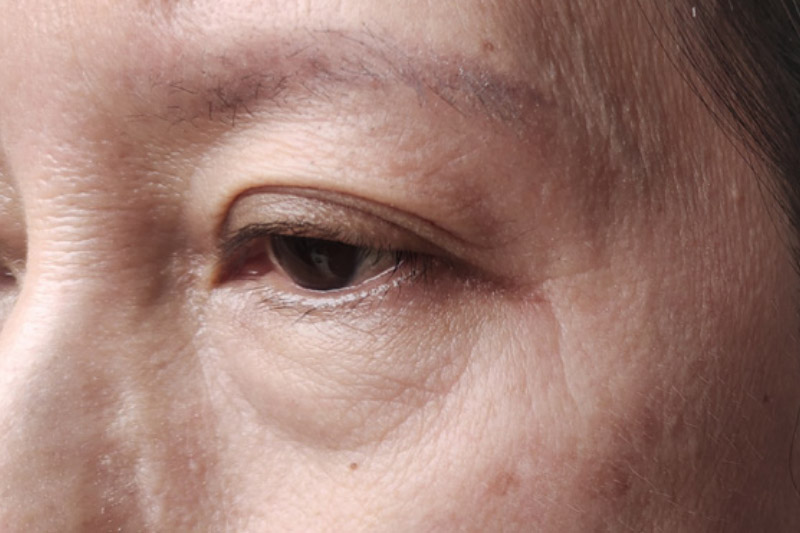Satellite Office
4660 Kenmore Avenue, Suite 416Alexandria, VA 22304
703-620-4300

Droopy eyelids are one of the most common reasons doctors refer patients to Eye Plastic Associates. Our patients are often displeased with how their eyelids make them appear older and tired, but many also experience vision trouble due to the eyelid blocking their field of vision. But why do droopy eyelids occur?
Two conditions cause most cases of droopy eyelids. The first is ptosis, which is the name used for a droopy eyelid when the eyelid itself fails to open properly. Dr. Scott generally tests for ptosis by gently lifting the skin on the upper eyelid and measuring whether the eye can open fully.
Ptosis has many causes, including congenital anomalies, nerve damage, and rarely, as the result of Botox use around the upper eyelid. The most common cause is a general weakening or slipping back of the upper eyelid’s levator muscle, allowing the upper edge of the eyelid to droop. Over time, these attachments of the levator muscle to the upper eyelid become less strong and the eyelid drops. The condition is associated with long-term wearing of gas-permeable contact lenses since many people pull on their lids too aggressively while removing the contact lenses. So, be gentle with your eyes!
Most people with significant acquired ptosis will receive an internal ptosis repair. During this surgery, Dr. Scott will create an incision on the inside of the upper eyelid and return the levator to its original position, thereby correcting the ptosis. This approach leaves patients without any visible scarring, and the stitching dissolves on its own.
When the eyelid is in a normal position, but there is redundant skin hanging near or over the upper eyelid margin, this is referred to as dermatochalasis. Skin can hang over the lid margin as it naturally loses collagen with age. The fat pad underneath the eyebrow can also flatten, letting skin hang down and obscure a person’s vision.
Blepharoplasty surgery is the most common treatment for dermatochalasis. It is the surgical removal of the appropriate amount of skin, muscle, and/or fat from the upper eyelid. When done well, patients will look like they’ve had a good night’s sleep rather than obvious eyelid surgery.
|
Unfortunately, many cases of dermatochalasis, or redundant upper eyelid skin, are genetically inherited. You can minimize any additional damage you do to your eyelids by being gentle when washing your face or gentle when inserting or removing contact lenses. And don’t forget Dr. Scott’s advice: “If you notice as a kid that your parents have drooping eyelids, make sure to get new parents!” |
  |